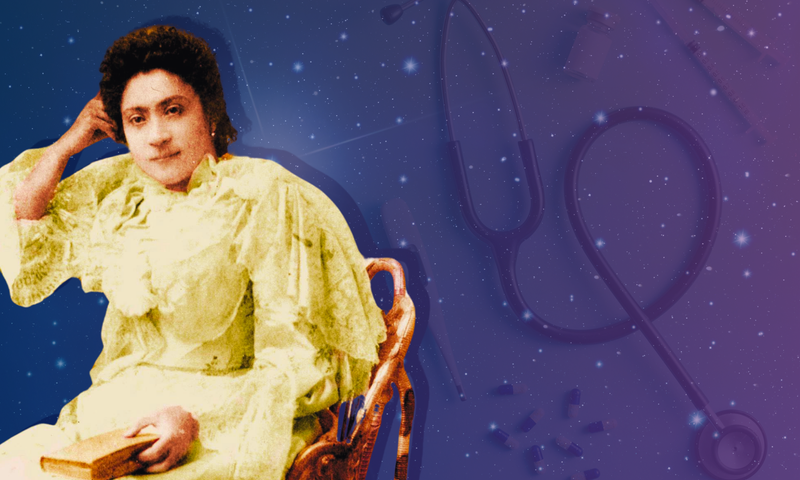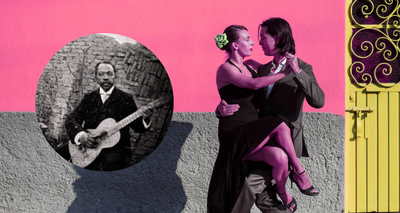In the late 19th century, the field of medicine was almost entirely male-dominated. Women were largely barred from formal medical education and shoved into their homes, performing domestic roles accepted by societal norms. Of course, women had a central role healing people in other capacities, such as midwives, healers, and apothecaries. However, the sole idea of a female doctor was often met with ridicule or resistance—until 1849. After being turned down by 10 medical schools, Elizabeth Blackwell became the first woman to earn a medical degree in the U.S. Then, in 1855, Mary Edwards Walker came, the first female surgeon in the U.S. Army and the first woman to receive the Congressional Medal of Honor. Three years later, Rebecca Lee Crumpler was known as the first African American woman doctor.
In Latin America, advances in gender rights had to wait until 1887, when a Chilean woman called Eloisa Díaz Insunza broke all institutional, social, and economic barriers. In this article, we’ll explore her story and the challenges she had to face from universities and even her own colleagues.
Eloísa Díaz and the Fight for Women’s Education in Chile
Eloísa Díaz was born in 1866 in Santiago. She was a part of a progressive family that valued education, so her parents supported her aspirations despite society discouraging women from pursuing intellectual careers. She completed her primary education at the Colegio de Primeras Letras de Dolores Cabrera de Martínez and then studied Humanities at the prestigious Liceo Isabel Le Brun de Pinochet. Later, to pursue a university education, Díaz decided to take her exams at the Instituto Nacional and obtained her bachelor’s degree in Philosophy and Humanities in 1881, before the age of 15.
During the 1860s and 1870s, Chile witnessed an important debate regarding the role of the state in education. Under the government of Manuel Montt, public policies aimed at developing a national education system began to take shape. However, financial constraints and the reluctance of the oligarchy led to a reliance on religious and municipal schools rather than expanding state-funded institutions. Women were directly affected by this debate because, by the mid-1860s, they could only attend a limited network of private primary schools, with no access to secondary education or professional training. The most significant breakthrough came in 1877, when Minister of Public Instruction Miguel Luis Amunátegui issued a decree allowing women to enter universities.
There was strong opposition from conservative and religious sectors, who saw women studying medicine as “unladylike” or even impossible. Yet this decree paved the way for Eloísa and other women to pursue higher education.
How Eloísa Díaz Became Latin America’s First Female Doctor
Díaz applied to the Universidad de Chile’s Faculty of Medicine and she soon faced resistance from a male-dominated academic world. However, her admission was groundbreaking and she excelled in her studies despite skepticism from professors and colleagues. In 1887, she earned her medical degree, for which she wrote a thesis on nutrition. This was the subject that would later define her career. Just seven days after her graduation, Dr. Ernestina Pérez Barahona became the second woman doctor in Chile.
Her will to help others made her dedicate her career to public health, where she focused on child nutrition, hygiene, and disease prevention. She became the Chief Physician of Chilean Public Schools, a role in which she implemented health programs for students, including vaccinations, school lunches, and medical check-ups—initiatives that were revolutionary at the time.
Revolutionizing Public Health: Eloísa Díaz’s Fight for School Nutrition & Vaccines
Let us bear in mind that the Chilean educational system was not at its best. The high percentages of school non-attendance (close to 90% among the population over five years of age) made it clear that school was a non-existent practice for the vast majority of Chileans. By the beginning of the twentieth century, Chile had more schools but only three out of every ten children were enrolled in them, only one out of every ten attended school, and the 1907 Census found a 62% of illiteracy among the school-age population.
Within that challenging context, Díaz’s efforts in school nutrition programs led to the introduction of free school meals to combat malnutrition among children, an initiative that set a precedent for future public policies. She was also a strong advocate for vaccination campaigns, helping children have access to immunization programs that prevented epidemics. Besides, she promoted maternal and child health, which contributed to the foundation of modern public health programs in Chile.
Her fearless dedication earned her national and international recognition, and led her to win awards at the 1910 International Hygiene and Medicine Congress in Buenos Aires.
From Eloísa Díaz to Today’s Latinas in Medicine: What’s Changed & What Hasn’t?
Eloisa’s impact is still felt today as more Latinas enter the medical profession. In the U.S., the number of Hispanic women physicians has steadily increased, although there are still some bumps on the road. According to the AAMC, they only make up around 6% of active physicians, a number that is thankfully growing, but not fast enough. Latinas remain underrepresented in medicine compared to their population size, so it’s important that the Government supports Latinas in STEM fields.
In Latin America, the number of women in medicine has grown significantly; for example, in 2019, women accounted for most doctors in the region. But despite having more female workers, the medical leadership isn’t gender balanced and doesn’t represent the actual population of health providers. This means that women take care of others but don’t have the power to decide the priorities of the health agenda.
In Chile, for example, over 50% of medical students are now women, a stark contrast to the late nineteenth century when Eloísa Díaz practiced medicine. Today, as more Latinas pursue careers in healthcare, Díaz’s story serves as a reminder that perseverance and dedication can challenge even the most entrenched societal norms. Eloísa Díaz paved the way, but the fight isn’t over. How can we empower more Latinas in medicine today?
En español
Eloísa Díaz: la primera doctora en América Latina
Eloísa Díaz fue la primera mujer en obtener un título de médica en Chile y América Latina en 1887, desafiando las normas de una profesión dominada por hombres. Gracias al Decreto Amunátegui de 1877, pudo acceder a la universidad y graduarse de la Facultad de Medicina de la Universidad de Chile, no sin enfrentar escepticismo por parte de sus profesores e incluso de sus propios compañeros.
Como médica jefe de las escuelas públicas, promovió la nutrición infantil, la vacunación y la salud maternoinfantil, un hito histórico que transformó la salud pública en Chile. Su impacto fue reconocido internacionalmente y su legado sigue vivo en el aumento de mujeres en la medicina. Hoy, más del 50% de los estudiantes de medicina en Chile son mujeres, lo que refleja el camino que Díaz abrió para las futuras generaciones.






